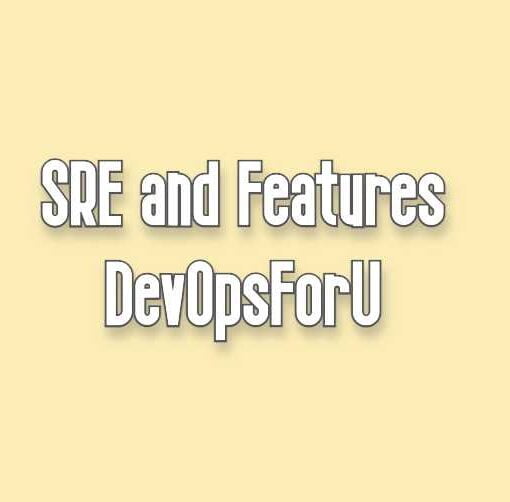
Discover the essential concepts of labels and annotations in Kubernetes, and learn how to effectively use them for better organization, management, and the context in your containerized applications.
Kubernetes has become the go-to solution for container orchestration, helping developers and system administrators manage their containerized applications with ease. In this article, we’ll dive deep into two essential features of Kubernetes: labels and annotations. We will discuss their importance, how to use them effectively and provide examples to better understand their practical applications. By the end of this article, you’ll be able to leverage labels and annotations in your Kubernetes deployments for better organization and management.
What are Labels and Annotations?
Labels
Labels are key-value pairs that can be attached to Kubernetes objects, such as Pods, ReplicaSets, and Services. They are used to categorize and organize these objects based on their characteristics, making it easier to manage and query them. Labels can be assigned during the creation of an object, or they can be added or modified later.
Annotations
Annotations, like labels, are also key-value pairs that can be associated with Kubernetes objects. However, they serve different purposes. Annotations are used to store non-identifying, non-queryable metadata about an object, such as notes or additional information. They can help provide context to users or tools working with these objects but are not used for filtering or grouping objects.
Using Labels in Kubernetes
Labels are an essential tool for organizing your Kubernetes objects, making it easier to manage and query them. Let’s explore how to use labels effectively in Kubernetes.
Creating Labels
To create a label, you can use the metadata.labels the field in the YAML file of your Kubernetes object. For example, let’s add a label to a simple Pod:
apiVersion: v1
kind: Pod
metadata:
name: my-pod
labels:
app: my-app
environment: production
spec:
containers:
- name: my-container
image: my-imageIn this example, we’ve added two labels: app and environment, with the values my-app and production, respectively.
Querying and Managing Objects Using Labels
You can use labels to query and manage your Kubernetes objects using kubectl. For instance, you can use the kubectl get command to retrieve all objects with a specific label:
kubectl get pods -l app=my-appThis command will return all Pods with the label app=my-app.
Using Annotations in Kubernetes
Annotations are a valuable tool for adding context to your Kubernetes objects. Let’s explore how to use annotations effectively.
Creating Annotations
To create an annotation, you can use the metadata.annotations field in the YAML file of your Kubernetes object. For example, let’s add an annotation to the same Pod we used earlier:
apiVersion: v1
kind: Pod
metadata:
name: my-pod
annotations:
description: "A brief description of my pod"
labels:
app: my-app
environment: production
spec:
containers:
- name: my-container
image: my-imageIn this example, we’ve added an annotation with the key description and the value "A brief description of my pod".
Viewing Annotations
To view annotations, you can use the kubectl describe command. For example, to view the annotations of our example Pod, you would use:
kubectl describe pod my-podThis command will display detailed information about the Pod, including its annotations.
Use Cases of Labels and Annotations in Kubernetes
| Use Case | Labels | Annotations |
|---|---|---|
| Identifying Objects | Used to categorize and identify objects based on their characteristics, such as application or environment. | Not applicable, as annotations are non-identifying metadata. |
| Querying and Filtering | Used to filter and query objects using kubectl and Kubernetes API. | Not applicable, as annotations are non-queryable metadata. |
| Organizing and Grouping | Used to group objects based on shared characteristics, making it easier to manage related objects. | Not applicable, as annotations are not used for object grouping. |
| Providing Additional Context | Not typically used for storing additional information beyond categorization. | Used to store additional metadata about an object, such as notes, descriptions, or other context. |
| Integrating with Tools | Some external tools may use labels to identify and interact with objects in Kubernetes. | External tools may use annotations to store tool-specific information about objects, without affecting core Kubernetes functionality. |
Conclusion
In this article, we have covered the fundamentals of labels and annotations in Kubernetes. By understanding how to effectively use labels and annotations, you can improve the organization, management, and context of your Kubernetes objects. Labels help you categorize and filter objects based on their characteristics, while annotations provide additional metadata that can be beneficial to users or tools interacting with these objects. Now that you’re familiar with these concepts, you can start leveraging them in your own Kubernetes deployments to maximize efficiency and maintainability.
Check out our article Enable CPU and Memory HPA in KubernetesRefrance: https://kubernetes.io/docs/home/
Follow us on LinkedIn for updates!






2 thoughts on “Labels and Annotations in Kubernetes: A Comprehensive Guide”